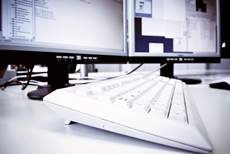
As operators re-gear for the ICD-10 changes to hit in 2015, researchers at the University of Illinois at Chicago have developed a free online tool to help operators determine where more time and effort will be needed to prepare for the transition.
The open source conversion tool — available at www.lussierlab.org/transition-to-ICD10CM — pulls data from the general equivalence mappings, or GEMs, created by the Centers for Medicare & Medicaid Services and the Centers for Disease Control and Prevention. Its intent is to find areas of complexity in the transition from ICD-9 to ICD-10, says Andrew Boyd, M.D., an assistant professor in the department of biomedical and health information sciences at the University of Illinois at Chicago.
A paper co-authored by Boyd in the Journal of the American Medical Informatics Association shows that about 63% of code translations are relatively simple. For example, one ICD-9 code can be directly swapped for one ICD-10 code, or one ICD-9 code translates to two ICD-10 codes — a category Boyd says is still very manageable as coders often need only one additional piece of information to determine the correct code. In other cases, however, concepts, definitions and codes get entangled, he says.
“You might have one ICD-9 code that maps forward to several ICD-10 codes, and ICD-10 codes that map backward to several other codes,” he explains. “They’re what we categorize as our convoluted class of codes.”
Going mobile
Nurses are increasingly relying on mobile devices, social media and the Internet, according to a survey from Wolters Kluwer Health. Their results, released in September, said 65% of nurses are using mobile devices at work for professional purposes at least 30 minutes a day, with 20% using it for 120 or more minutes. The survey also said half of respondents said their organization blocks Facebook, Twitter, Pinterest and YouTube on company networks.
Gesture recognition
University of Washington researchers have developed a low-power wireless sensing technology that could let users train their smartphones to recognize gestures. Some smartphones are starting to incorporate 3-D gesture sensing based on cameras, but this consumes major battery power, the researchers said. Their way involves using small antennas to capture changes in reflected signals, meaning that tapping or sliding gestures could correspond to commands on a phone, such as silencing a ring.
Sniffing out C. diff
British scientists have developed an “electronic nose” they say can sniff out the bacteria C. difficile. The team from the University of Leicester says different strains of the bacteria have a unique chemical fingerprint, or smell, that make it possible to quickly detect an infection. Because the different strains have a different smell, doctors could use the device to tailor their treatments, according to researchers.
Slower cognition
Regular Internet use has been linked with slowed cognitive decline in older adults. A recent British study found that adults ages 50 to 90 who use email and the Internet are more likely to perform better on memory tests than their less technologically inclined peers.
Mental health app
A new smartphone app, developed by Dartmouth University researchers, can track students’ mental health, academic performance and behavior trends. They presented their findings at the ACM International Joint Conference on Pervasive and Ubiquitous Computing. The app’s methods can work for non-student groups, researchers said, such as letting the phone measure workplace stress and productivity, as well as potentially whether the user is depressed or lonely.
Software preview
Providers will receive needed coding and billing software six months before the ICD-10 transition date, the Centers for Medicare & Medicaid Services has announced. This is double the lead time that providers had for a planned 2014 transition, which was delayed by a year. Operators have long been preparing for the switch to the new International Classification of Diseases system, which was supposed to take place on Oct. 1, 2014. It has been pushed back to Oct. 1, 2015. The new system is greatly expanded, with the goal being more specificity.
Health tech is hot
Investors are increasingly turning to healthcare technology companies, Reuters reported in September. Venture capital funding for healthcare technology is up 176% to $2.3 billion so far in 2014 compared to the same period last year. The money has primarily gone to companies specializing in payment management and data analytics, compared to previous interest in biotech companies.
Dated technology costly
Outmoded methods of communication between caregivers may be responsible for significant amounts of wasted time during shifts, resulting in inefficient resident transfers and hundreds of thousands of dollars in lost revenue each year, according to a new survey.
Conducted by the Ponemon Institute on behalf of healthcare communication firm Imprivata, the survey found that the continued use of pagers in healthcare is a primary factor in delays during patient transfers, admissions and emergency response coordination.
From the December 01, 2014 Issue of McKnight's Senior Living



